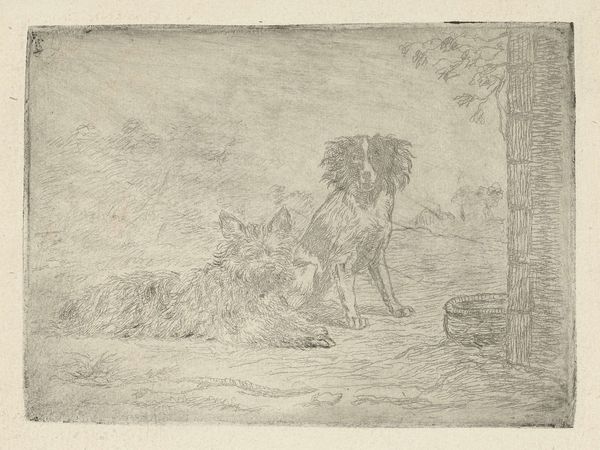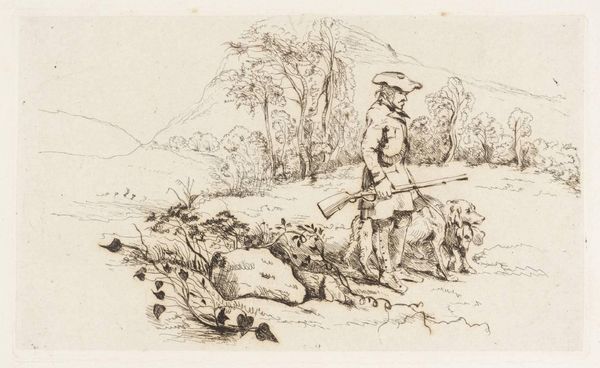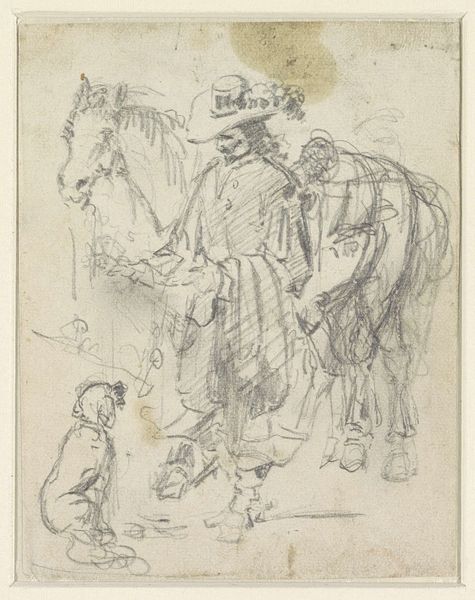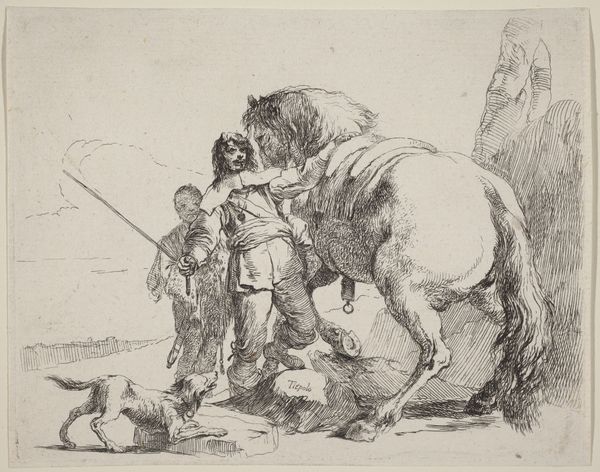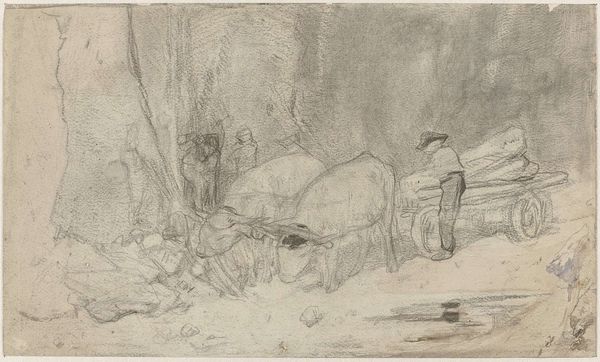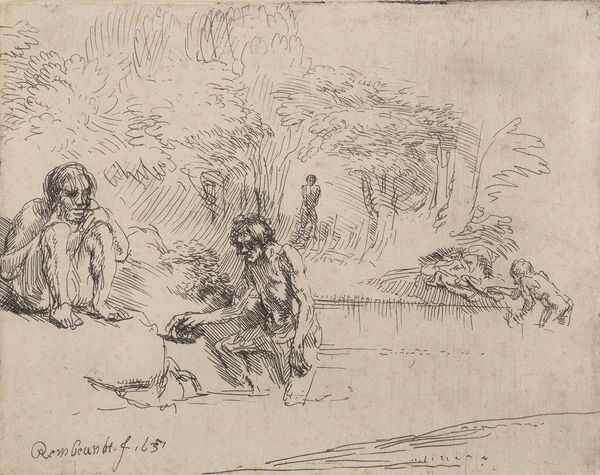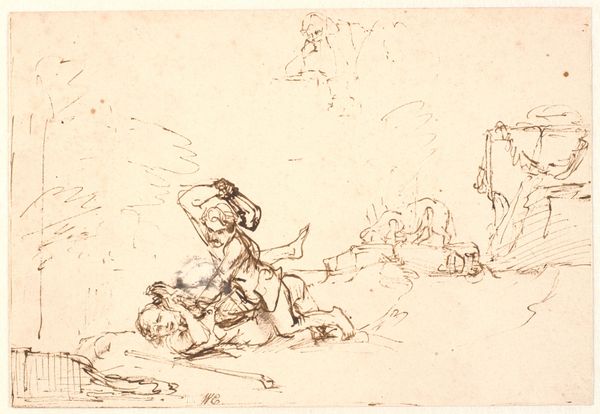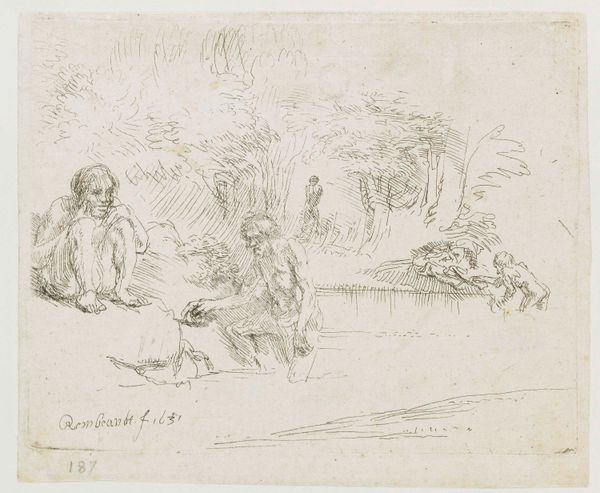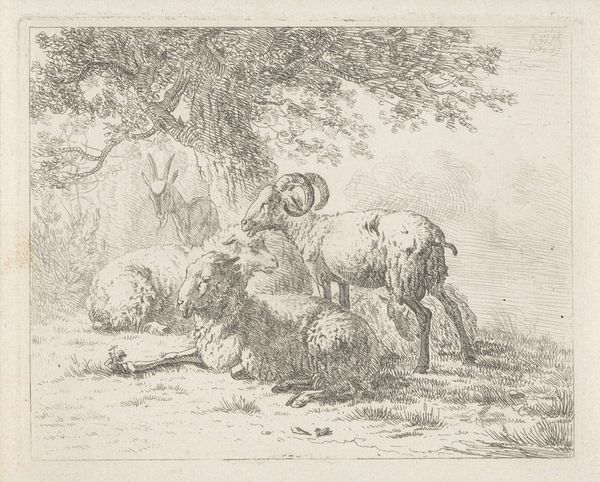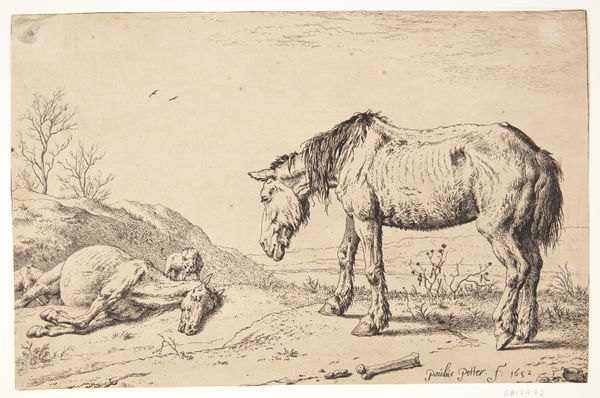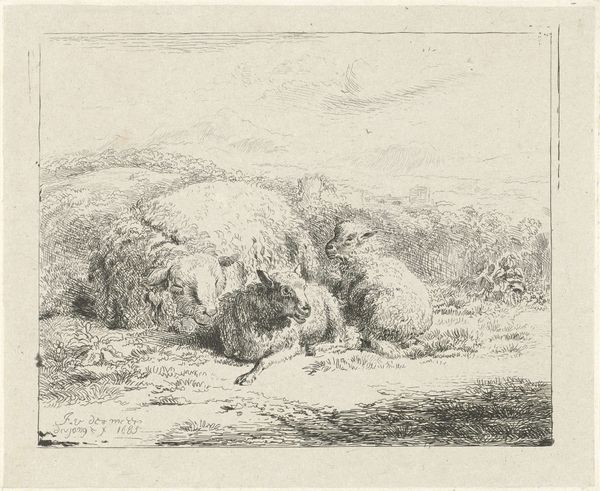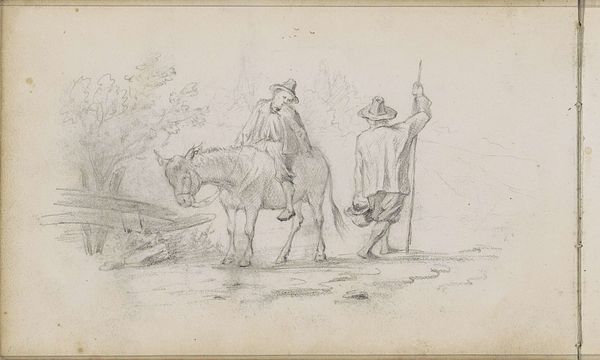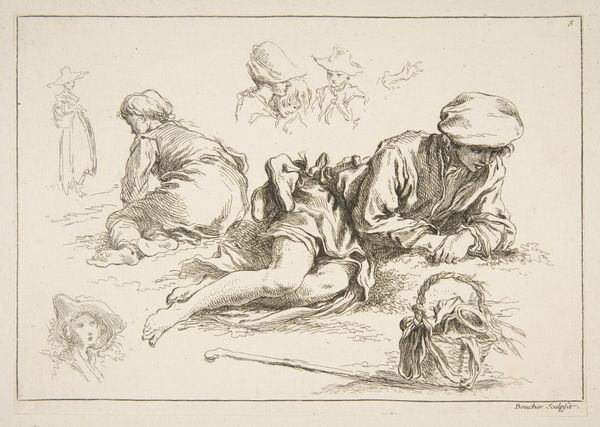
Herdersjongen in het gras gezeten, met tegenover hem een geit c. 1841 - 1857
0:00
0:00
#
amateur sketch
#
light pencil work
#
quirky sketch
#
pencil sketch
#
incomplete sketchy
#
personal sketchbook
#
idea generation sketch
#
sketchwork
#
fantasy sketch
#
initial sketch
Dimensions: height 136 mm, width 262 mm
Copyright: Rijks Museum: Open Domain
Editor: This drawing, “Herdersjongen in het gras gezeten, met tegenover hem een geit,” created by Johan Daniël Koelman sometime between 1841 and 1857, shows a shepherd boy with a goat. It's a quick sketch, and it makes me wonder what Koelman intended. What do you see in this work? Curator: Well, it’s tempting to view this seemingly simple sketch through the lens of the burgeoning national identity of the Netherlands in the mid-19th century. We have this idyllic pastoral scene. A young shepherd, a goat...but is it more than just that? Consider the role of the pastoral in constructing a romanticized idea of the ‘Dutch’ landscape and the idealized common folk connected to the land. Editor: So you're saying that what appears to be just a sketch might actually be subtly commenting on broader social themes? Curator: Precisely. Artists were crucial in shaping the public's imagination of the nation. Sketches like this could serve as building blocks for larger, more consciously nationalistic paintings or illustrations. Notice also the seemingly unfinished nature. Is that deliberate? Does it suggest a sort of rawness, a lack of artifice, further idealizing a rustic existence? Editor: That’s interesting. I was so focused on the simplicity of the image. Curator: And the intended audience is important. Who would have seen this initially? Was it meant for public consumption or for Koelman’s personal reflection? Understanding that context shifts our entire perspective. Editor: That really changes how I see it. It’s more than just a boy and a goat; it's a window into how artists participated in defining national identity. Curator: Indeed. It reminds us that art, in all its forms, doesn’t exist in a vacuum. It’s part of a much larger social and political conversation.
Comments
No comments
Be the first to comment and join the conversation on the ultimate creative platform.
